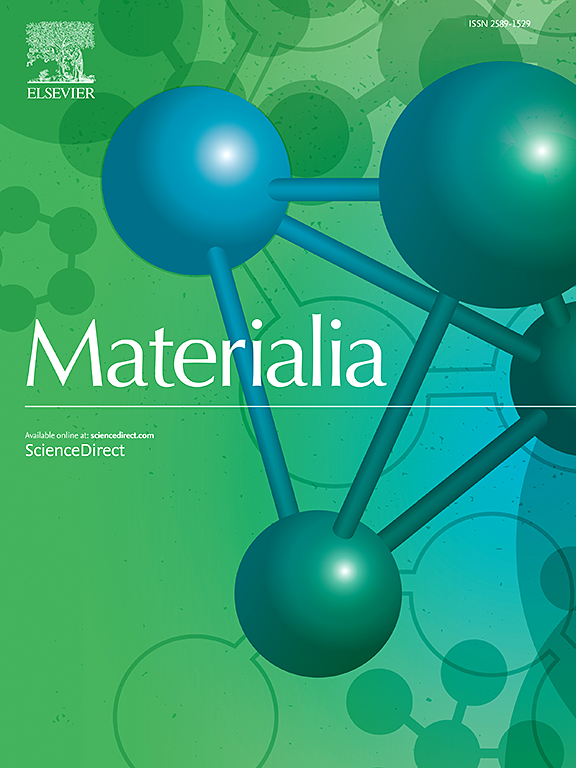Approximating nucleation rates of glass ceramics using in-situ X-ray diffraction
IF 3
Q2 MATERIALS SCIENCE, MULTIDISCIPLINARY
引用次数: 0
Abstract
Glass ceramics are ideal for applications ranging from the culinary to defense industries. The properties of glass ceramics are a strong function of their microstructure, which in turn is controlled by constitutive nucleation and growth treatments. Nucleation has been extensively studied but remains an experimental and theoretical challenge. Traditional isothermal methods for measuring nucleation rates require time-consuming measurements and careful statistics, leading to only a few material systems with nucleation data available, approximately one-hundred glass systems were studied in half a century. To overcome these challenges, we present a new non-isothermal technique utilizing in-situ X-Ray Diffraction (XRD) with data analyzed through a modified Johnson-Mehl-Avrami-Kolmogorov (JMAK) equation. Three homogenous nucleated glass systems were analyzed: Li2O•2SiO2 (lithium disilicate), Na2O•2CaO•3SiO2 (combeite), and Li2Oׅ•2B2O3 (lithium diborate). This method utilizes crystallized fractions through XRD, allowing resolution far beyond microscopy techniques. It was thus possible to compare the evolution of the crystallized volume fractions by X-ray diffraction with optical microscopy from literature. This method was successful in reproducing the experimental nucleation curve from the temporal development of the number density and crystal size within four orders of magnitude, while also achieving the correct peak position, leading to a new method to rapidly approximate the nucleation rate of complex glass-ceramics.

利用原位 X 射线衍射估算玻璃陶瓷的成核率
从烹饪到国防工业,玻璃陶瓷都是理想的应用领域。玻璃陶瓷的特性与其微观结构密切相关,而微观结构又受到构成成核和生长处理的控制。成核问题已被广泛研究,但仍是实验和理论上的难题。测量成核率的传统等温方法需要耗时的测量和仔细的统计,导致只有少数材料系统有成核数据,而半个世纪以来研究了大约一百种玻璃系统。为了克服这些挑战,我们提出了一种新的非等温技术,利用原位 X 射线衍射 (XRD),通过改进的约翰逊-梅尔-阿夫拉米-科尔莫戈罗夫 (JMAK) 方程分析数据。分析了三种均质成核玻璃体系:Li2O-2SiO2(二硅酸锂)、Na2O-2CaO-3SiO2(孔雀石)和 Li2Oׅ-2B2O3(二硼酸锂)。这种方法通过 XRD 利用结晶馏分,分辨率远远超过显微镜技术。因此,可以通过 X 射线衍射与文献中的光学显微镜比较结晶体积分数的演变。这种方法成功地从数量密度和晶体尺寸的时间发展过程中再现了实验成核曲线,其变化幅度不超过四个数量级,同时还获得了正确的峰值位置,从而为快速近似复杂玻璃陶瓷的成核率提供了一种新方法。
本文章由计算机程序翻译,如有差异,请以英文原文为准。
求助全文
约1分钟内获得全文
求助全文
来源期刊

Materialia
MATERIALS SCIENCE, MULTIDISCIPLINARY-
CiteScore
6.40
自引率
2.90%
发文量
345
审稿时长
36 days
期刊介绍:
Materialia is a multidisciplinary journal of materials science and engineering that publishes original peer-reviewed research articles. Articles in Materialia advance the understanding of the relationship between processing, structure, property, and function of materials.
Materialia publishes full-length research articles, review articles, and letters (short communications). In addition to receiving direct submissions, Materialia also accepts transfers from Acta Materialia, Inc. partner journals. Materialia offers authors the choice to publish on an open access model (with author fee), or on a subscription model (with no author fee).
 求助内容:
求助内容: 应助结果提醒方式:
应助结果提醒方式:


